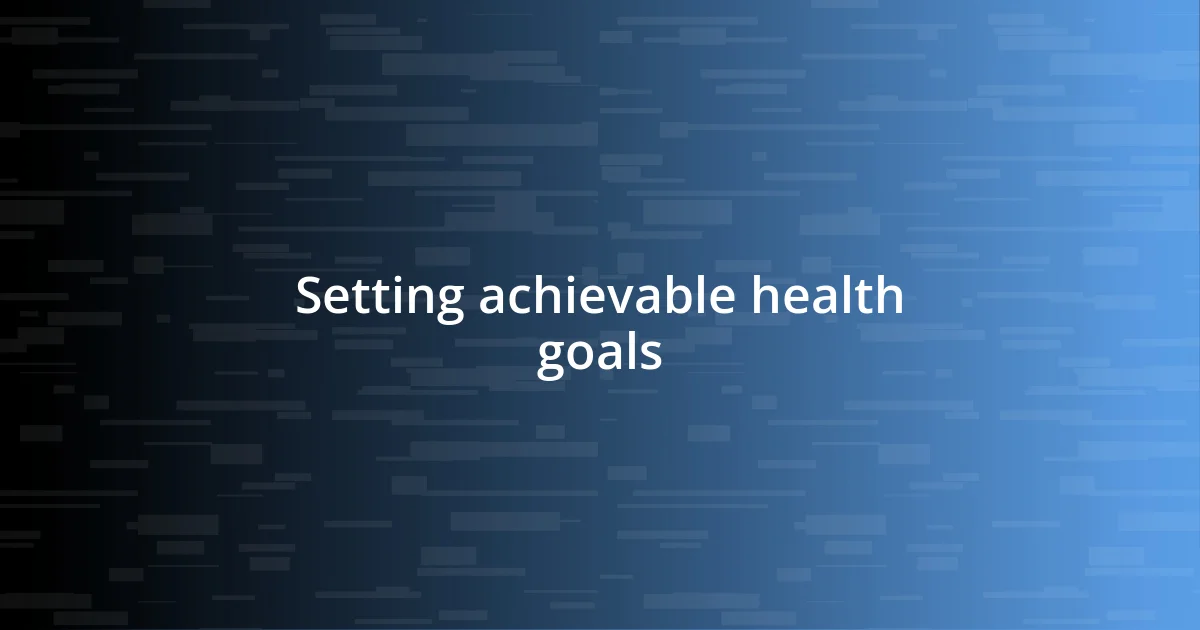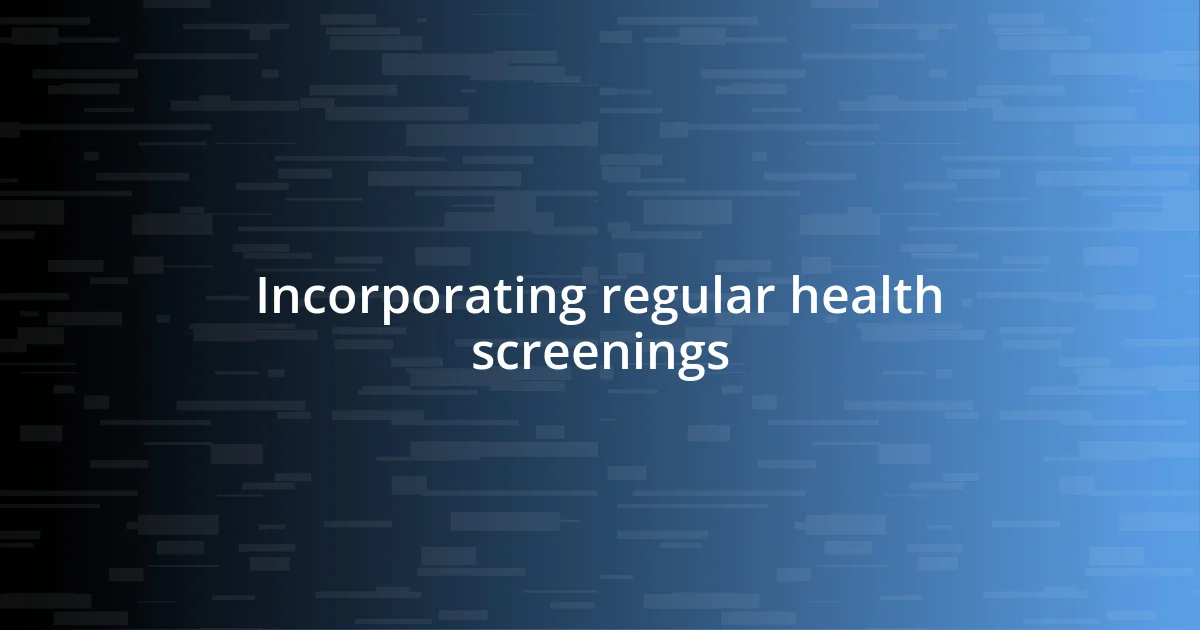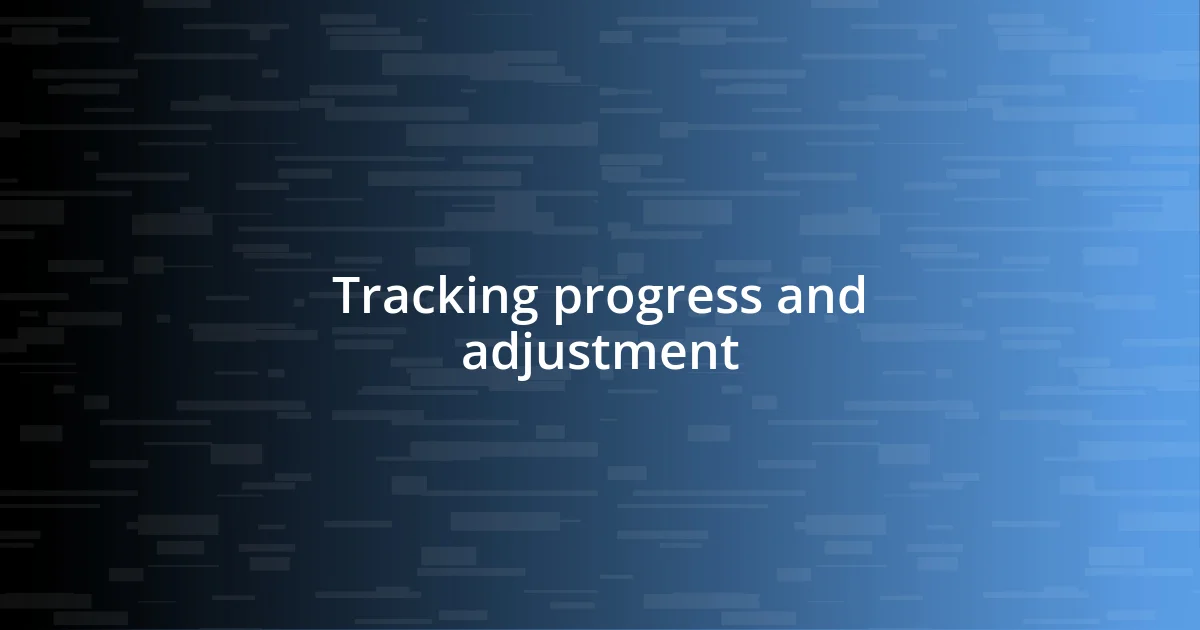Key takeaways:
- Preventive care routines enhance health and wellbeing through proactive measures like screenings and vaccinations.
- Identifying personal health risks through reflection and self-assessment is crucial for tailored health management.
- Setting achievable health goals, tracking progress, and being adaptable keep a preventive care routine engaging and effective.

Understanding preventive care routines
Preventive care routines are all about taking proactive measures to maintain one’s health and wellbeing before any issues arise. I remember a time when I brushed off the importance of regular check-ups, thinking, “I feel fine, so why bother?” Little did I realize that a simple annual appointment could have caught a developing issue early on, saving me from a much bigger problem later.
What I’ve come to understand is that preventive care isn’t just about avoiding illness; it’s about enhancing the quality of life. Engaging in activities like routine screenings and vaccinations fosters a sense of empowerment. Have you ever felt that rush of assurance after a clean bill of health? That’s exactly why I now prioritize these routines in my life—they provide peace of mind amid all the uncertainties we face.
Building a preventive care routine means being intentional with your health choices, and it often involves evaluating your lifestyle and habits. When I started tracking my diet and exercise, I noticed an immediate shift—not only did I feel better physically, but my mental clarity improved too. Isn’t it fascinating how interconnected our physical and mental health can be? The more I delved into this journey, the more I recognized that every small step contributes to a healthier future.

Identifying personal health risks
Identifying my personal health risks became a pivotal part of my preventive care journey. Initially, I felt overwhelmed by the sheer amount of information available about health conditions, but I realized that reflection and self-assessment were essential. Sitting down and thinking about my family history, lifestyle choices, and even the changes in my body over the years helped me clarify my potential health risks.
To make this evaluation easier, I found it helpful to create a list of factors to consider:
- Family History: Are there any chronic conditions that run in my family?
- Lifestyle Habits: Do I smoke, drink excessively, or have a sedentary lifestyle?
- Weight Fluctuations: Have I noticed significant changes in my weight recently?
- Mental Health: Am I feeling more stressed or overwhelmed than usual?
- Age: As I’ve aged, have I experienced any health issues that warrant attention?
Reflecting on these aspects not only heightened my awareness but also empowered me to take action. I remember a moment when a friend shared her own health concerns, and it struck me that having open conversations about risk factors could also help in understanding my own. This sense of camaraderie made the daunting task of assessing my health risks feel more approachable and manageable.

Setting achievable health goals
Setting achievable health goals is crucial for anyone looking to enhance their preventive care routine. Personally, I learned that having specific goals can drastically change my approach to health. For instance, when I aimed to exercise three times a week instead of saying, “I’ll get fit,” I felt more empowered. Achieving those small, realistic targets provided me with a sense of accomplishment that motivated me to continue. It’s all about the journey, and those incremental victories kept me moving forward.
Moreover, I’ve found that writing down my goals makes them feel more tangible. When I began tracking my water intake and meal planning, I was surprised at how much clarity it brought to my daily routine. One day, after noticing my energy levels spike, I realized that I had hit my hydration targets for the week. If you’ve ever experienced that sudden boost of vitality that makes you feel unstoppable, you know what I mean! Setting achievable health goals not only keeps me focused but also makes every day feel like an opportunity to enhance my wellbeing.
Finally, it’s essential to revisit and adjust your goals regularly. Life can be unpredictable, and I’ve encountered times when I had to adapt my fitness routine due to a busy work schedule. Rather than feeling discouraged, I pivoted to quick 15-minute workouts that fit my day better. It’s okay to reassess what’s working for you; the key is to stay committed and flexible in your journey. Isn’t it rewarding when you realize that what matters most is progress, not perfection?
| Goal Type | Description |
|---|---|
| Short-term Goals | Achieved within a few weeks, such as drinking an extra glass of water daily. |
| Medium-term Goals | Set for a few months, like exercising consistently 3 times a week. |
| Long-term Goals | Aim for over a year, such as reaching a specific weight or fitness level. |

Incorporating regular health screenings
Incorporating regular health screenings into my routine was a game changer for me. At first, I approached these appointments with hesitation, wondering if they were really necessary. But after receiving a surprising result during a cholesterol screening, I understood just how critical it was to stay ahead of potential issues. There’s something truly reassuring about having data that helps me make informed decisions about my health.
One time, I scheduled my annual physical with a bit of dread. As I sat in the waiting room, I thought, “What if this reveals something I don’t want to hear?” But once the consultation began, it became clear how vital this practice was for my peace of mind. The doctor discussed not just my physical health but also my emotional well-being, and I appreciated the holistic approach. Each screening brings up those moments of anxiety, but it’s such a relief to receive clarity afterward. It’s like holding a mirror up to my health; sometimes, I see things I’m proud of, and other times, I see what needs attention.
Regular screenings have also fostered deeper conversations with my family. After my own results prompted me to take action, I encouraged my parents to be proactive as well. Discussing our screening experiences turned into a family tradition, and I often wonder—what could be more valuable than sharing health insights with loved ones? Ultimately, these screenings are a small time investment that yield significant returns in peace of mind and health management.

Developing a balanced diet plan
Developing a balanced diet plan required me to reflect on my eating habits, and the changes I made genuinely transformed my energy levels. I started by assessing what I was regularly consuming and quickly realized that I wasn’t getting enough variety. One evening, while prepping dinner, the colors on my plate brought a smile to my face and I thought, “How can something so simple make me feel so good?” Incorporating a spectrum of fruits, vegetables, proteins, and healthy fats became not just a necessity, but a joy that brightened my meals and overall mood.
I also learned to listen to my body, a lesson that took time but was incredibly rewarding. On days when I felt sluggish, I began to notice a correlation with my diet, like skipping breakfast or opting for unhealthy snacks. Changing that habit was a game changer; suddenly, I understood the value of a nourishing breakfast to fuel my day. Have you ever felt the difference a good meal makes? For me, starting my mornings with a bowl of oatmeal topped with fresh berries became a ritual that set a positive tone for the rest of the day.
Additionally, meal prepping helped me stay accountable and reduced the temptation to make unhealthy choices. On Sundays, I dedicated a couple of hours to chop vegetables, marinate proteins, and portion out snacks. This organized approach meant I didn’t have to think too hard during the busy week ahead. I still remember the first time I opened my fridge and saw healthy meals neatly arranged; I felt a sense of pride that reminded me of being my own health advocate. Isn’t it empowering to take control of your eating habits? It’s about small, consistent choices that lead to a healthier lifestyle, one meal at a time.

Establishing an exercise regimen
Establishing an exercise regimen was a significant milestone in my preventive care journey. I remember the first time I laced up my sneakers and stepped outside. The fresh air hit me like a wake-up call, and I thought, “Why hadn’t I done this sooner?” Setting a schedule was crucial. I chose to commit to a mix of cardio, strength training, and flexibility exercises, balancing what felt right for my body and what I enjoyed. The combination kept me motivated and, more importantly, it made exercise feel less like a chore and more like a vital part of my day.
In those early days, I struggled with consistency. Some mornings, the couch seemed oh-so-appealing. But I devised a simple trick: I became my own workout buddy. Scheduling workouts with a friend not only added accountability but transformed my routine into something I looked forward to. One cold Saturday, rather than sleeping in, my friend and I met up for a brisk walk. We laughed, caught up on life, and before I knew it, we had walked for an hour. Isn’t it amazing how a little company can make a world of difference?
Over time, I discovered the importance of setting realistic goals to measure my progress. I began tracking my workouts using a simple app and celebrated even the small wins. When I completed my first 5K, the rush of accomplishment was unparalleled. It made me question—what else could I achieve if I pushed my limits? Each step forward, no matter how small, reminded me that establishing an exercise regimen is about progress, not perfection.

Tracking progress and adjustment
Tracking my progress felt like uncovering a treasure map on my preventive care journey. I started by maintaining a simple journal, jotting down my daily meals, workouts, and how I felt. It surprised me how much clarity this simple act brought; I could connect my moods and energy levels to specific habits. Have you ever noticed how certain choices affect your overall vibe? For me, those notes became an eye-opener.
As I reviewed my entries, I realized that adjustments were necessary to keep things fresh and aligned with my goals. Some weeks, I noticed that my energy dipped during workouts, prompting me to tweak my nutrition or even my sleep schedule. It’s a bit like tuning a musical instrument; occasionally, you have to adjust the strings or keys to hit the perfect note. This process of reflection and alteration not only improved my physical well-being but also deepened my self-awareness.
Eventually, I turned my tracking into a fun challenge. I embraced technology by using fitness apps to monitor my workouts and progress visually. Watching those numbers rise, whether it was my running distance or the weights I lifted, sparked an exhilarating sense of achievement. I remember a time when I shattered my previous squat record; that rush of elation made me wonder—what other limits could I break? Each achievement encouraged me to keep pushing further, reinforcing the idea that maintaining a preventive care routine is an ever-evolving journey.














